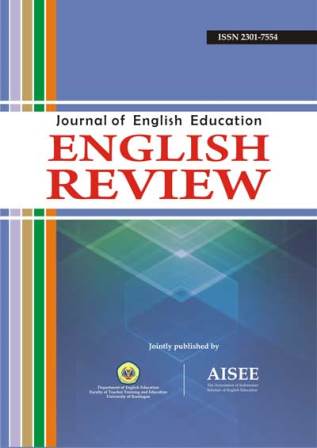A STYLISTIC ANALYSIS OF “THE RIME OF THE ANCIENT MARINERâ€
Main Article Content
Abstract
If a specimen of literary art is seen as a fine tapestry of words made by the skilled seamstress—the poet, then the lexis and structure of a language are the raw materials—the fabric and the thread—by weaving which into specific patterns the finished product is achieved. The choice of materials and their arrangement into unique patterns always bear an image of their creator, or the artist; thus, a close view of them reveals the artist’s identity and brings out the meaningful message that underlies the ornate running threads. Mostly, the students of literary studies cannot appreciate the beauty of the literary classics on their own. Consequently, they simply mimic the ideas, and sometimes even the words, of famous professional critics when asked to give their own critical judgment on the aesthetic merit or the thematic quality of a literary work in the shape of a home assignment, classroom presentation or an annual assessment test. Now, the researcher has got the inspiration for carrying out this study from an idea expounded in Widdowson (1975) that this mimicry can be replaced by genuine individual opinion if the students, or even those people who have non-academic concerns with literature, are brought to a standpoint from where they can have a closer view of the raw materials, the language resources, which are involved in the making of a literary product. And, if the product in its finished form cannot elicit a desired response from them then making them sensitive to the process of its making can be quite effective in this regard. Through the present study, an attempt has been made to show an easy access to the outlandish world of verse by means of the linguistic route which is laid with the familiar flagstones of grammar and vocabulary. Meaning thereby that in this study the elusiveness of poetry will be dealt with the precision of a social scientist, the linguist. The approach which serves as the basis of this study is not an invention of the researcher; rather, it is a well-known twentieth century approach known as stylistics (Jeffries & McIntyre, 2010, p. 30). Samuel Taylor Coleridge’s famous ballad, “The Rime of the Ancient Marinerâ€, being a widely read poem and bearing various stylistics features, offered itself as an ideal object for this study. The poet’s aesthetic message is explored by analyzing the finest details of his linguistic expression. And, careful considerations have been made throughout the study to prevent the overlooking of any instance of deviant linguistic units or recurring patterns for interpretation because such elements contribute largely to the meaning of any literary product. The study is descriptive in its nature therefore qualitative data has been integrated with and substantiated by the quantitative one.Â
Keywords: stylistics, literature, lexical, semantic and graphological deviationsArticle Details
All articles published in English Review: Journal of English Education (ERJEE) are licensed under the Creative Commons Attribution 4.0 International License (CC BY 4.0).
Copyright Ownership
Authors retain the copyright of their articles and grant ERJEE the right of first publication. The journal is granted a non-exclusive license to publish, reproduce, and distribute the article in any format, medium, or platform, provided that proper credit is given to the original authors.
License Terms – CC BY 4.0
Under the Creative Commons Attribution 4.0 International License, others are free to:
- Share — copy and redistribute the material in any medium or format
- Adapt — remix, transform, and build upon the material for any purpose, even commercially
As long as they:
- Provide appropriate credit to the original author(s) and source
- Provide a link to the license (https://creativecommons.org/licenses/by/4.0/)
- Indicate if any changes were made
There are no restrictions on the reuse, reproduction, or adaptation of published articles as long as attribution is properly given.
Author Warranties
By submitting a manuscript to ERJEE, authors confirm that:
- The work is original and does not infringe any existing copyright.
- The manuscript has not been previously published and is not under consideration elsewhere.
- All sources and references are appropriately acknowledged.
- Necessary permissions have been obtained for any copyrighted materials used.
References
Freenborn, D. (1996). Style: Text analysis and linguistic criticism. London: MacMillan Press.
Hough, G.G. (1969). Style and stylistics: Concepts of literature. Routledge Press.
Jeffries, L., & McIntyre, D. (2010). Stylistics. New York, NY: Cambridge University Press.
Norgaard, N., Montoro, R., & Busse, B. (2010). Keys terms in stylistics. New York, NY: Continuum International Publishing Group.
Short, M. (1996). Exploring the language of poems, plays and prose. New York, NY: Longman Publishing Group.
Simpson, P. (1997). Language through literature: An introduction. London: Routledge Press.
Thornborrow, J., & Wareing, S. (1998). Patterns in language: An introduction to language and literary style. London, Canada & USA: Routledge Press.
Van Peer, W. (1986). Stylistics and psychology: Investigations of foregrounding. Australia: Croom Helm Provident House.
Widdowson, H. G. (1975). Stylistics and the teaching of literature. Longman Publishing Group.
Widdowson, H. G. (1992). Practical Stylistics: An approach to poetry. Oxford: Oxford University Press.

